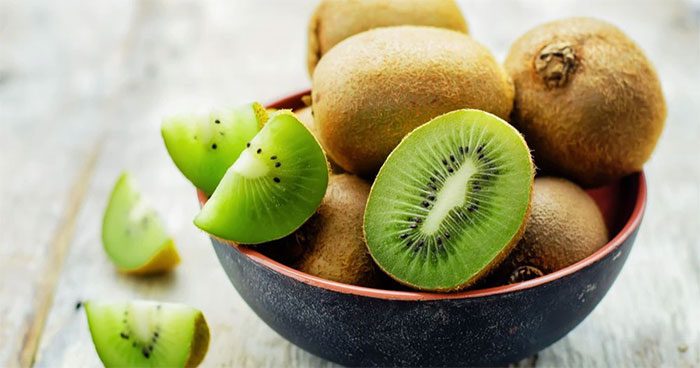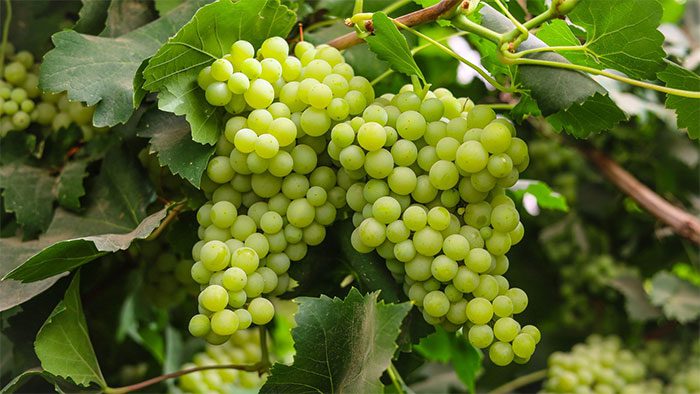You may realize that you are wasting a lot of nutrients and health benefits when discarding the peels of these fruits every time you eat them.
We often have the habit of peeling fruits before eating. However, nutrition expert Sun Yukuo (Taiwan, China) states that the peels of some fruits contain a significant amount of nutrients, even more than the flesh of the fruit itself. Moreover, many fruits can only fully express their health benefits when consumed with their skins, a fact that many people are unaware of.
Of course, he also emphasizes that when choosing to eat fruit peels, it is essential to select a reliable source and wash them thoroughly to protect your health. According to Dr. Sun Yukuo, we should learn to eat the peels of these four common fruits to avoid waste and enhance our health from within:
1. Kiwi
Many people may be surprised to receive the advice to eat the skin of kiwi to gain multiple times the nutrients and health benefits. This is because the skin of this fruit is often rough and covered in fuzz. Dr. Sun Yukuo advises that to avoid discomfort, you can remove some of the fuzz before eating but should not peel the skin off.

Few know that the health benefits in kiwi skin exceed those in the flesh. (Illustrative image).
Studies have shown that kiwi skin is rich in flavonoids, antioxidants, and vitamin C, with fiber content up to twice that of the flesh. Not only does it aid digestion, prevent cancer, reduce fatigue, enhance skin and hair health, and assist in weight loss, but eating kiwi skin also helps prevent bacterial infections caused by Staphylococcus and E.coli.
Eating kiwi with the skin can improve sleep quality by up to 40% due to its high content of calcium, magnesium, and vitamin C, while also reducing mental stress. Notably, the antioxidant levels in kiwi skin are three times higher than in the flesh, resulting in greater cancer-fighting potential.
2. Grapes
Grape skins are rich in cellulose, pectin, and iron, which are beneficial for health and have beauty-enhancing properties. Additionally, grapes are also rich in polyphenols, which play a crucial role in the antioxidant process and protect the cardiovascular system. The polyphenol content in grape flesh is about 3-5%, while in grape skins, it ranges from 20% to 30%. This indicates that grape skins have a relatively high nutritional content.

Grapes are very rich in polyphenols, which play a key role in the antioxidant process.
Grape skins are also rich in anthocyanins and resveratrol, which have antioxidant properties, enhance beauty, prevent cancer, and obesity. Flavonoids, especially in purple grape skins, help lower blood pressure, promote the increase of high-density lipoprotein in the blood, reduce harmful cholesterol levels, and protect heart health. Eating grapes with their skins is also an effective way to supplement iron and prevent anemia.
However, eating only grape skins can be quite challenging and unnecessary. Instead, focus on choosing clean sources of grapes, wash them thoroughly, and consume them with the skins.
3. Apples
Most people have a habit of peeling apples before eating, but this is also a waste. The skin of apples is high in fiber (accounting for half of the total fiber content of the fruit), rich in vitamins C, A, and potassium.

Many people discard apple skins without realizing their nutritional value. (Illustrative image)
Apple skins also contain four times more vitamin K than other parts. If you peel the skin, you lose one-third of the nutrients. Vitamin K is common in meat and green vegetables, helping the body form blood clots when scratched, activating proteins, supporting cell development, and maintaining strong bones.
Moreover, studies indicate that health-boosting compounds such as quercetin, polyphenols, and anthocyanins are more concentrated in apple skins. Quercetin aids the body in preventing respiratory issues and protects the lungs from irritants. It is also believed to counteract brain tissue damage and protect memory. Meanwhile, polyphenols and anthocyanins help protect cardiovascular health, combat cancer, and enhance brain function.
However, Dr. Sun Yukuo reminds that special care should be taken when selecting apples to eat with the skin. Specifically, avoid eating the skins of waxed apples, apples treated with ripening agents, or those showing signs of damage or bruising.
4. Watermelon
This is another fruit that few people think has an edible peel. Dr. Sun Yukuo emphasizes that while you don’t need to eat the entire peel of the watermelon, you should make use of the white rind on the peel. Eating it alone may be bland, but when consumed with the red flesh, it won’t significantly affect the flavor. The best way is to blend both the rind and the flesh to make juice or smoothies. Additionally, the white rind can be used to prepare many delicious dishes.

You should only eat the white rind of the watermelon peel instead of the whole peel to avoid affecting the flavor too much. (Illustrative image)
He adds that while it may not have as many nutrients as the flesh, the fiber in watermelon rind is substantial. You will be amazed by the health benefits it offers.
The peel that people often discard contains citrulline, which converts to arginine. This essential amino acid benefits the heart, enhances immune system function, and improves blood circulation. Watermelon rind has also been shown to help reduce blood pressure, prevent cardiovascular diseases, alleviate arthritis symptoms, prevent kidney stones, aid digestion, and reduce discomfort during pregnancy.
Furthermore, watermelon rind is excellent for weight loss. A study on male sexual health at the National Institutes of Health in the United States found that the L-citrulline in watermelon rind helps improve male vitality and enhance libido.



















































